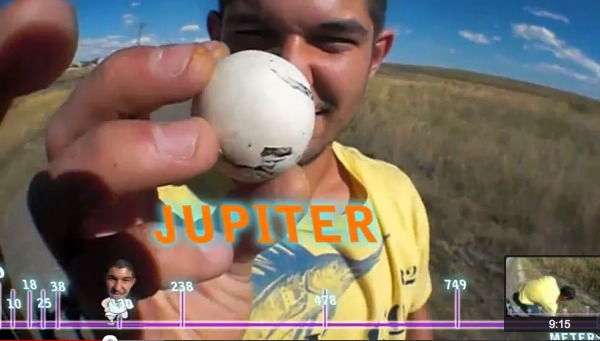Build a model solar system
Build a scale model solar system using foam balls, paint, string, and measurements to learn planet sizes, distances, and orbits through hands on exploration.



Step-by-step guide to build a scale model solar system
How to make Solar system working model - Science project model for Students
Step 1
Gather all the materials on a clear table so everything is ready to use.
Step 2
Line up the foam balls and measure each ball's diameter in centimeters and write the number next to each ball.
Step 3
Pick the largest foam ball to be Jupiter and calculate the size scale by dividing Jupiter's real diameter 139820 km by that ball's diameter in cm to get km per cm; write the scale down.
Step 4
Use these planet diameters in km and divide each by your scale to get the model diameter in cm: Mercury 4880 km; Venus 12104 km; Earth 12742 km; Mars 6779 km; Jupiter 139820 km; Saturn 116460 km; Uranus 50724 km; Neptune 49244 km.
Step 5
Choose and label the foam ball that best matches each model diameter by comparing your measured ball sizes to the calculated model diameters and stick a small name tag on each ball.
Step 6
Paint each labeled foam ball with the planet colors and patterns that match its name.
Step 7
Let all the painted balls dry completely before handling them.
Step 8
Draw or paint a bright Sun at the center of your poster board and let it dry.
Step 9
Measure from the center of the poster board to the far edge where Neptune should fit and record that maximum radius in cm to use for the distance scale.
Step 10
Calculate the orbital distance scale using Neptune's average distance 4495100000 km divided by your measured radius in cm to get km per cm for distances.
Step 11
Using these average planet distances in km—Mercury 57900000 km; Venus 108200000 km; Earth 149600000 km; Mars 227900000 km; Jupiter 778500000 km; Saturn 1433500000 km; Uranus 2872500000 km; Neptune 4495100000 km—divide each by your distance scale to get each planet's orbit radius in cm and write them down.
Step 12
Cut pieces of string to match each orbit radius in cm so each string equals the distance from the Sun to that planet on your poster board.
Step 13
Push a skewer or straw into each painted planet, measure from the Sun center along the skewer using the matching string length, then glue or tape the skewer to the poster board so each planet sits at its correct orbit radius.
Step 14
Take photos or a short description of your finished scale solar system and share your creation on DIY.org.
Final steps
You're almost there! Complete all the steps, bring your creation to life, post it, and conquer the challenge!


Help!?
What can we use if foam balls are hard to find?
If foam balls aren't available, make model spheres by inflating small balloons and covering them with papier-mâché or tightly wrapping crumpled newspaper with masking tape, then measure each sphere's diameter in cm exactly as step 2 requires before labeling.
What should we do if the calculated model diameters don't match any of our measured foam balls?
If no measured foam ball matches a calculated model diameter from the step where you divide each planet's km by your scale, either trim larger foam balls with a craft knife or combine smaller beads for tiny planets and then re-measure and re-label before painting.
How can we adapt this project for different age groups?
For preschoolers, skip the scale calculations and have them match and paint pre-measured foam balls and paste strings on the poster board, while older kids can do the full measuring (step 2), scale calculations for diameters and distances (steps 3 and 10), and precisely cut strings and glue skewers themselves.
How can we extend or personalize our finished scale solar system?
Add cardboard rings with painted sandpaper for Saturn, glue small beads as moons to the skewers for Jupiter and Earth, attach a battery tealight behind the Sun on the poster board for illumination, and write one fun fact next to each planet label before sharing on DIY.org.
Watch videos on how to build a scale model solar system
DIY Solar System Model with Cardboard | Easy Step-by-Step Guide
Facts about astronomy for kids
✨ Most of the Solar System is empty space: scaled models show planets as tiny dots far apart.
🪐 Jupiter is so huge you could fit more than 1,300 Earths inside it by volume.
🔁 Neptune takes about 165 Earth years to complete one orbit around the Sun.
🌍 One astronomical unit (AU) — the average distance from Earth to the Sun — is about 150 million kilometers (93 million miles).
🌞 The Sun contains about 99.86% of all the mass in the Solar System.
How do I build a scale model solar system with foam balls and string?
What materials do I need to make a scale model solar system?
What ages is building a model solar system suitable for?
What are the benefits and safety tips for building a model solar system?


One subscription, many ways to play and learn.
Only $6.99 after trial. No credit card required



